Towards an Efficient Chipless RFID System for Modern Applications in IoT Networks
Abstract
:1. Introduction
2. The RFID Tag Design
3. The RFID Antenna Design
4. RFID System Validation
5. Conclusions
Author Contributions
Funding
Acknowledgments
Conflicts of Interest
References
- Abdulkawi, W.M.; Sheta, A.-F.A. K-State Resonators for High-Coding-Capacity Chipless RFID Applications. IEEE Access 2019, 7, 185868–185878. [Google Scholar] [CrossRef]
- Mulloni, V.; Donelli, M. Chipless RFID Sensors for the Internet of Things: Challenges and Opportunities. Sensors 2020, 20, 2135. [Google Scholar] [CrossRef] [Green Version]
- Abdulkawi, W.M.; Issa, K.; Sheta, A.-F.A.; Alshebeili, S.A. A Novel Printable Tag of M-Shaped Strips for Chipless Radio-Frequency Identification in IoT Applications. Electronics 2020, 9, 2116. [Google Scholar] [CrossRef]
- Abdulkawi, W.M.; Sheta, A.F.A.; Issa, K.; Alshebeili, S.A. Compact Printable Inverted-M Shaped Chipless RFID Tag Using Dual-Polarized Excitation. Electronics 2019, 8, 580. [Google Scholar] [CrossRef] [Green Version]
- Ramzan, R.; Omar, M.; Siddiqui, O.; Ksiksi, T.; Bastaki, N. Internet of Trees (IoTr) Implemented by Highly Dispersive Electromagnetic Sensors. IEEE Sens. J. 2020, 21, 642–650. [Google Scholar] [CrossRef]
- Abdulkawi, W.M.; Sheta, A.-F.A. Chipless RFID Sensors Based on Multistate Coupled Line Resonators. Sens. Actuators A Phys. 2020, 309, 112025. [Google Scholar] [CrossRef]
- Sharma, V.; Hashmi, M. Advances in the Design Techniques and Applications of Chipless RFIDs. IEEE Access 2021, 9, 79264–79277. [Google Scholar] [CrossRef]
- Javed, N.; Azam, M.A.; Amin, Y. Chipless RFID Multi-sensor for Temperature Sensing and Crack Monitoring in an IoT Environment. IEEE Sens. Lett. 2021, 5, 1–4. [Google Scholar] [CrossRef]
- Trinh, L.H.; Le, T.N.; Staraj, R.; Ferrero, F.; Lizzi, L. A Pattern-Reconfigurable Slot Antenna for IoT Network Concentrators. Electronics 2017, 6, 105. [Google Scholar] [CrossRef] [Green Version]
- Marjani, M.; Nasaruddin, F.; Gani, A.; Karim, A.; Hashem, I.A.T.; Siddiqa, A.; Yaqoob, I. Big IoT data analytics: Architecture, opportunities, and open research challenges. IEEE Access 2017, 5, 5247–5261. [Google Scholar]
- Stergiou, C.; Psannis, K.E.; Gupta, B.B.; Ishibashi, Y. Security, privacy & efficiency of sustainable Cloud Computing for Big Data & IoT. Sustain. Comput. Inform. Syst. 2018, 19, 174–184. [Google Scholar] [CrossRef]
- Finkenzeller, K. RFID Handbook: Fundamentals and Applications in Contactless Smart Cards, Radio Frequency Identification and Near-Field Communication; John Wiley & Sons: London, UK, 2010. [Google Scholar]
- Preradovic, S.; Karmakar, N.C. Multiresonator-Based Chipless RFID: Barcode of the Future; Springer Science & Business Media: Berlin/Heidelberg, Germany, 2012. [Google Scholar]
- Rajasekhar, N.; Reddy, R.R.; Darimireddy, N. V-shaped slits and a slot loaded pentagonal boundary patch antennas for wideband applications. In Proceedings of the 2017 IEEE International Conference on Antenna Innovations & Modern Technologies for Ground, Aircraft and Satellite Applications (iAIM), Bangalore, India, 24–26 November 2017; pp. 1–5. [Google Scholar]
- Darimireddy, N.K.; Reddy, R.R.; Prasad, A.M. A Miniaturized Hexagonal-Triangular Fractal Antenna for Wide-Band Applications [Antenna Applications Corner]. IEEE Antennas Propag. Mag. 2018, 60, 104–110. [Google Scholar] [CrossRef]
- Sujatha, M.; Reddy, R.R.; Darimireddy, N.K.; Ramamohan, B. Multi Wideband Hexagonal-Spiral Microstrip Band-Pass Filter for Wireless Applications. In Proceedings of the 2018 IEEE Indian Conference on Antennas and Propogation (InCAP), New Delhi, India, 28–31 October 2018; pp. 1–4. [Google Scholar] [CrossRef]
- Abdulkawi, W.M.; Sheta, A.A. High coding capacity chipless radiofrequency identification tags. Microw. Opt. Technol. Lett. 2019, 62, 592–599. [Google Scholar] [CrossRef]
- Hussain, M.; Amin, Y.; Lee, K.-G. A Compact and Flexible UHF RFID Tag Antenna for Massive IoT Devices in 5G System. Sensors 2020, 20, 5713. [Google Scholar] [CrossRef] [PubMed]
- Ul, Z.; Ullah, Z.; Abedin, Z.U. Design of a Microstrip Patch Antenna with High Bandwidth and High Gain for UWB and Different Wireless Applications. Int. J. Adv. Comput. Sci. Appl. 2017, 8, 379–382. [Google Scholar] [CrossRef] [Green Version]
- Das, T.K.; Dwivedy, B.; Behera, S.K. Design of a meandered line microstrip antenna with a slotted ground plane for RFID applications. AEU-Int. J. Electron. Commun. 2020, 118, 153130. [Google Scholar] [CrossRef]
- Haraz, O.M.; Ashraf, M.; Alshebili, S.; Alshareef, M.R.; Behairy, H.M. UWB monopole antenna chipless RFID tags using 8-bit open circuit stub resonators. In Proceedings of the 2016 21st International Conference on Microwave, Radar and Wireless Communications (MIKON), Krakow, Poland, 9–11 May 2016; pp. 1–4. [Google Scholar]
- Babaeian, F.; Karmakar, N. A High Gain Dual Polarized Ultra-Wideband Array of Antenna for Chipless RFID Applications. IEEE Access 2018, 6, 73702–73712. [Google Scholar] [CrossRef]
- Ray, K.P.; Thakur, S.; Deshmukh, R.A. UWB printed sectoral monopole antenna with dual polarization. Microw. Opt. Technol. Lett. 2012, 54, 2066–2070. [Google Scholar] [CrossRef]
- Gupta, A.; Srivastava, D.K.; Saini, J.P.; Verma, R.K. Comparative analysis of microstrip-line-fed gap-coupled and direct-coupled microstrip patch antennas for wideband applications. J. Comput. Electron. 2019, 19, 457–468. [Google Scholar] [CrossRef]
- Daghari, M.; Sakli, H. Radiation performance enhancement of an ultra wide band antenna using metamaterial band-pass filter. Int. J. Electr. Comput. Eng. (IJECE) 2020, 10, 5861–5870. [Google Scholar] [CrossRef]
- Kirtania, S.; Younes, B.; Hossain, A.; Karacolak, T.; Sekhar, P. CPW-Fed Flexible Ultra-Wideband Antenna for IoT Applications. Micromachines 2021, 12, 453. [Google Scholar] [CrossRef]
- Aslam, B.; Kashif, M.; Amin, Y.; Tenhunen, H. Low-profile magnetically coupled dual resonance patch antenna for UHF RFID applications. AEU-Int. J. Electron. Commun. 2021, 133, 153672. [Google Scholar] [CrossRef]
- Babaeian, F.; Karmakar, N.C. Time and Frequency Domains Analysis of Chipless RFID Back-Scattered Tag Reflection. IoT 2020, 1, 7. [Google Scholar] [CrossRef]
- Herrojo, C.; Mata-Contreras, J.; Nunez, A.; Paredes, F.; Ramon, E.; Martin, F. Near-Field Chipless-RFID System with High Data Capacity for Security and Authentication Applications. IEEE Trans. Microw. Theory Tech. 2017, 65, 5298–5308. [Google Scholar] [CrossRef] [Green Version]
- Hossain, A.; Ibrahimy, M.; Motakabber, S.; Azam, S.; Islam, M. Multi-resonator application on size reduction for retransmission-based chipless RFID tag. Electron. Lett. 2021, 57, 26–29. [Google Scholar] [CrossRef]
- Preradovic, S.; Balbin, I.; Karmakar, N.; Swiegers, G.F. Multiresonator-Based Chipless RFID System for Low-Cost Item Tracking. IEEE Trans. Microw. Theory Tech. 2009, 57, 1411–1419. [Google Scholar] [CrossRef] [Green Version]
- Vena, A.; Perret, E.; Tedjini, S. A Depolarizing Chipless RFID Tag for Robust Detection and Its FCC Compliant UWB Reading System. IEEE Trans. Microw. Theory Tech. 2013, 61, 2982–2994. [Google Scholar] [CrossRef]
- Ma, Z.-H.; Yang, J.-H.; Chen, C.-C.; Yang, C.-F. A re-transmitted chipless tag using CSRR coupled structure. Microsyst. Technol. 2018, 24, 4373–4382. [Google Scholar] [CrossRef] [Green Version]
- Babaeian, F.; Karmakar, N. A UWB Antenna for Chipless RFID Tag Detection. In Proceedings of the 2020 International Conference on Electrical, Communication, and Computer Engineering (ICECCE), Istanbul, Turkey, 12–13 June 2020; pp. 1–6. [Google Scholar]
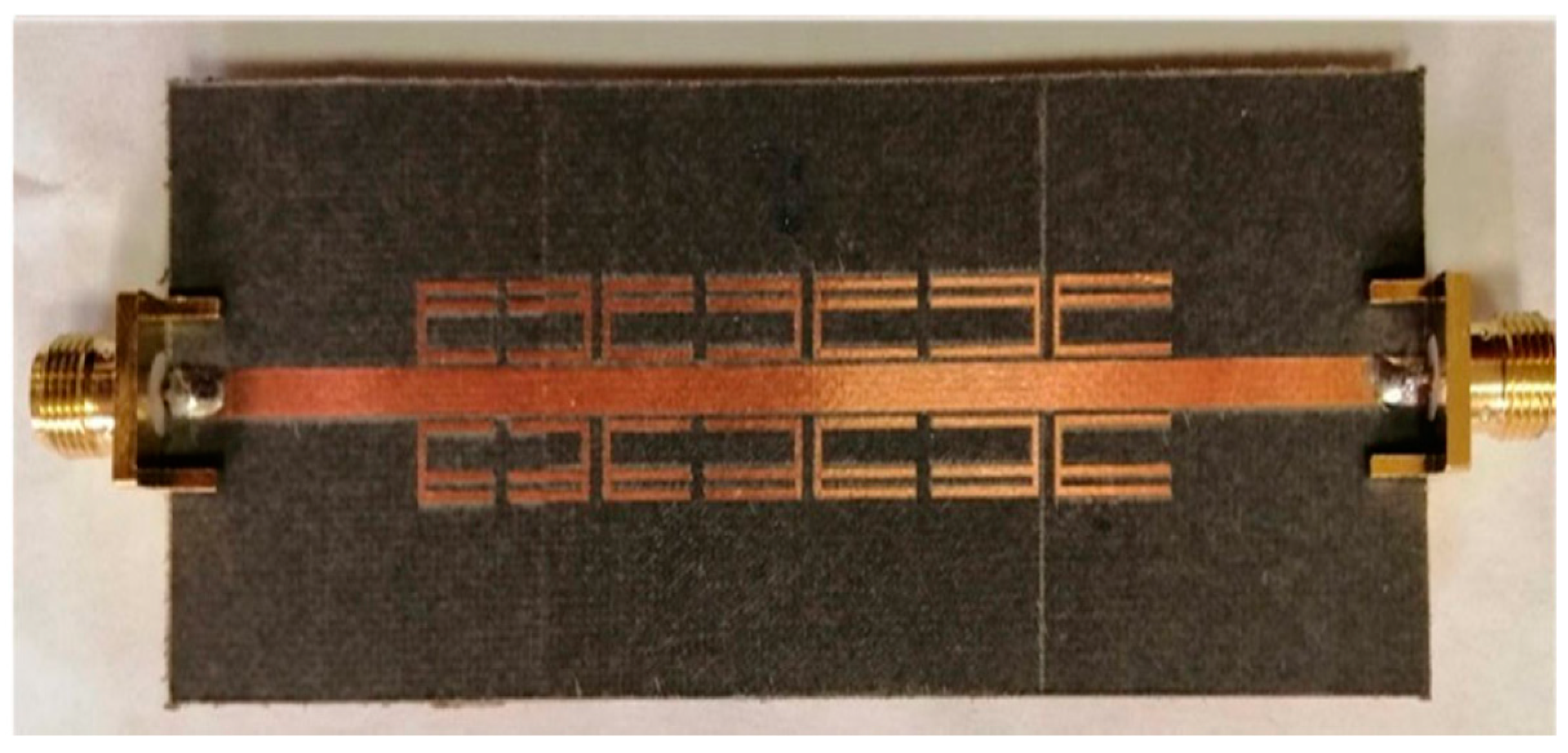
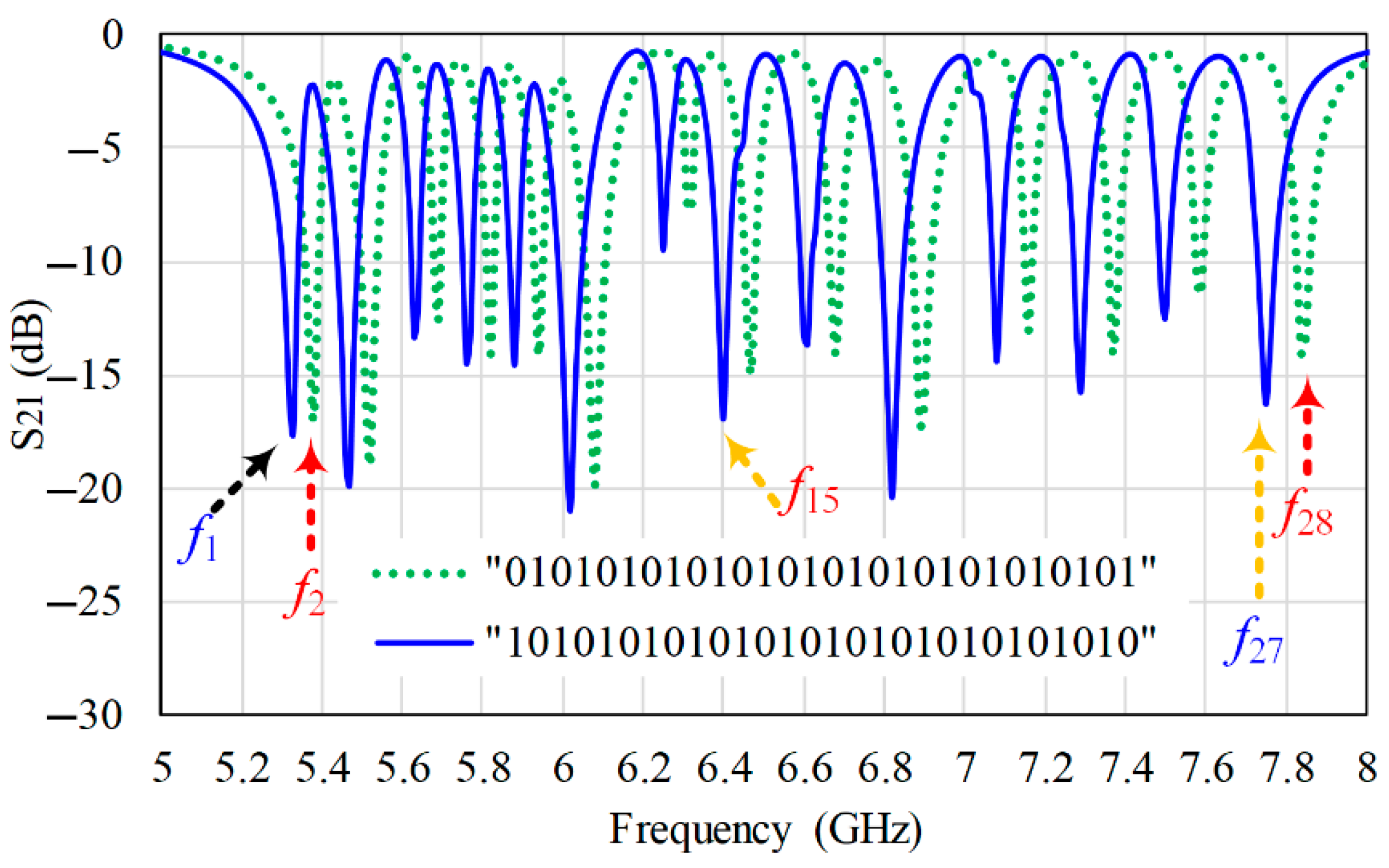

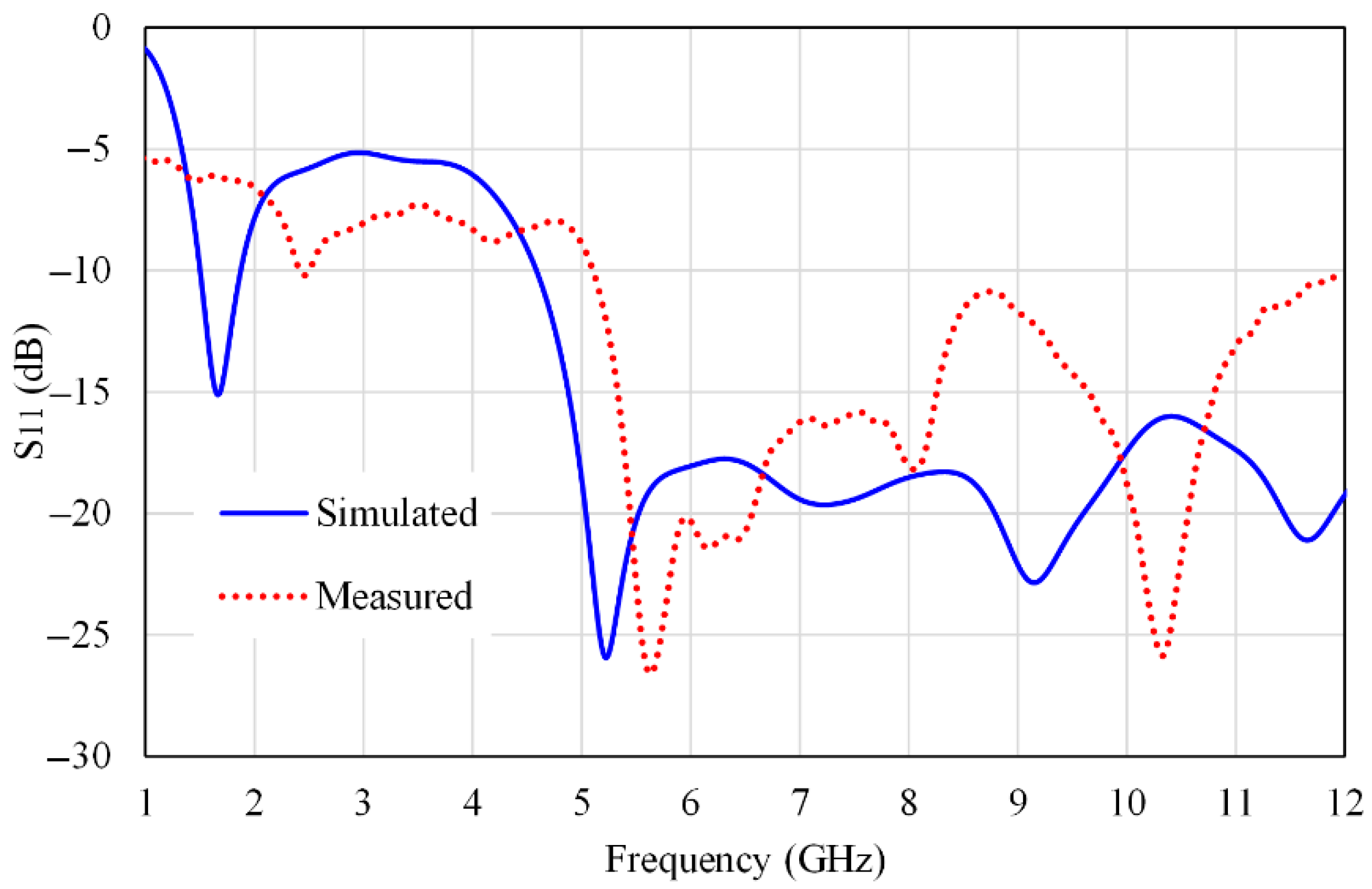
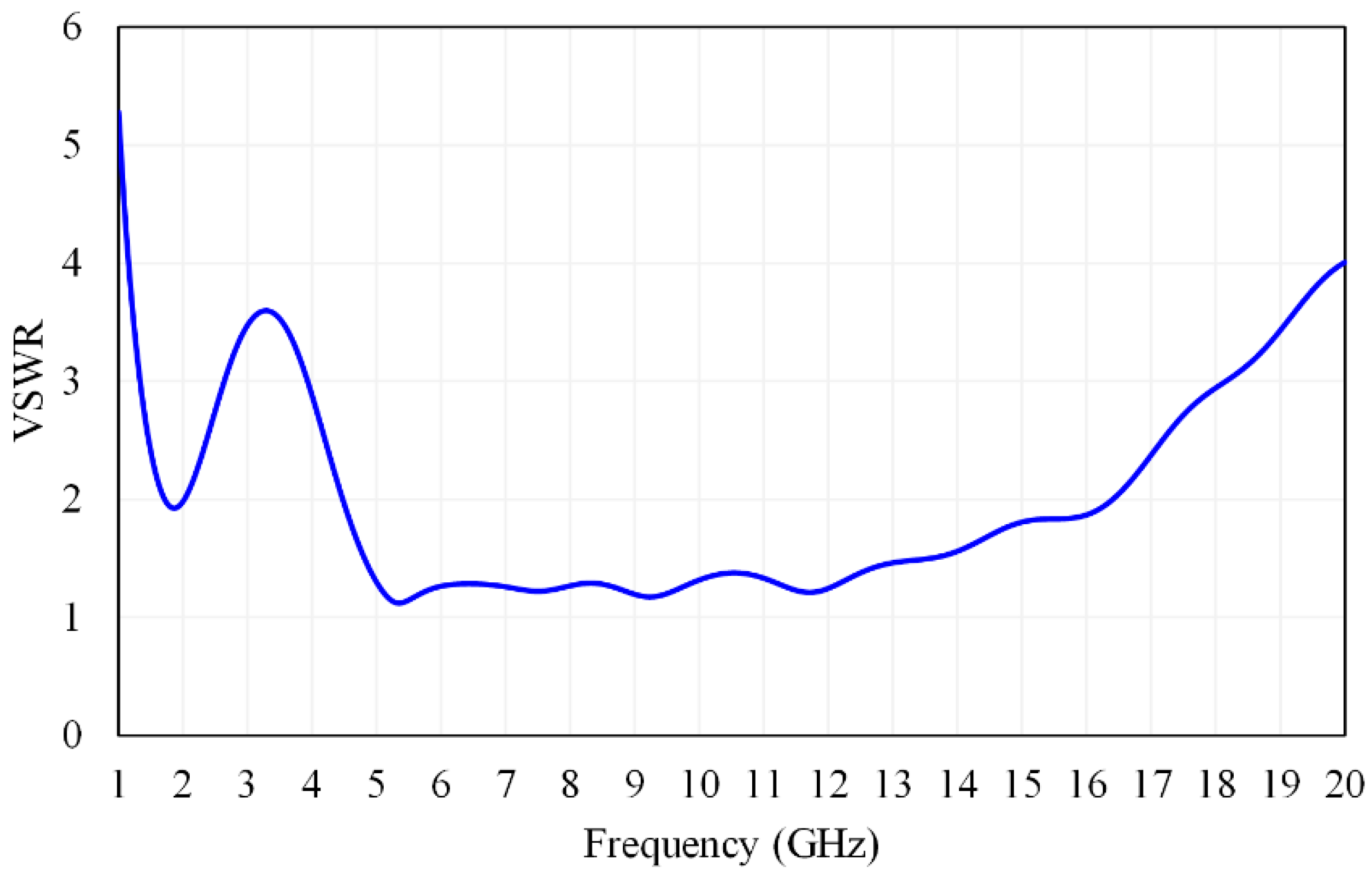
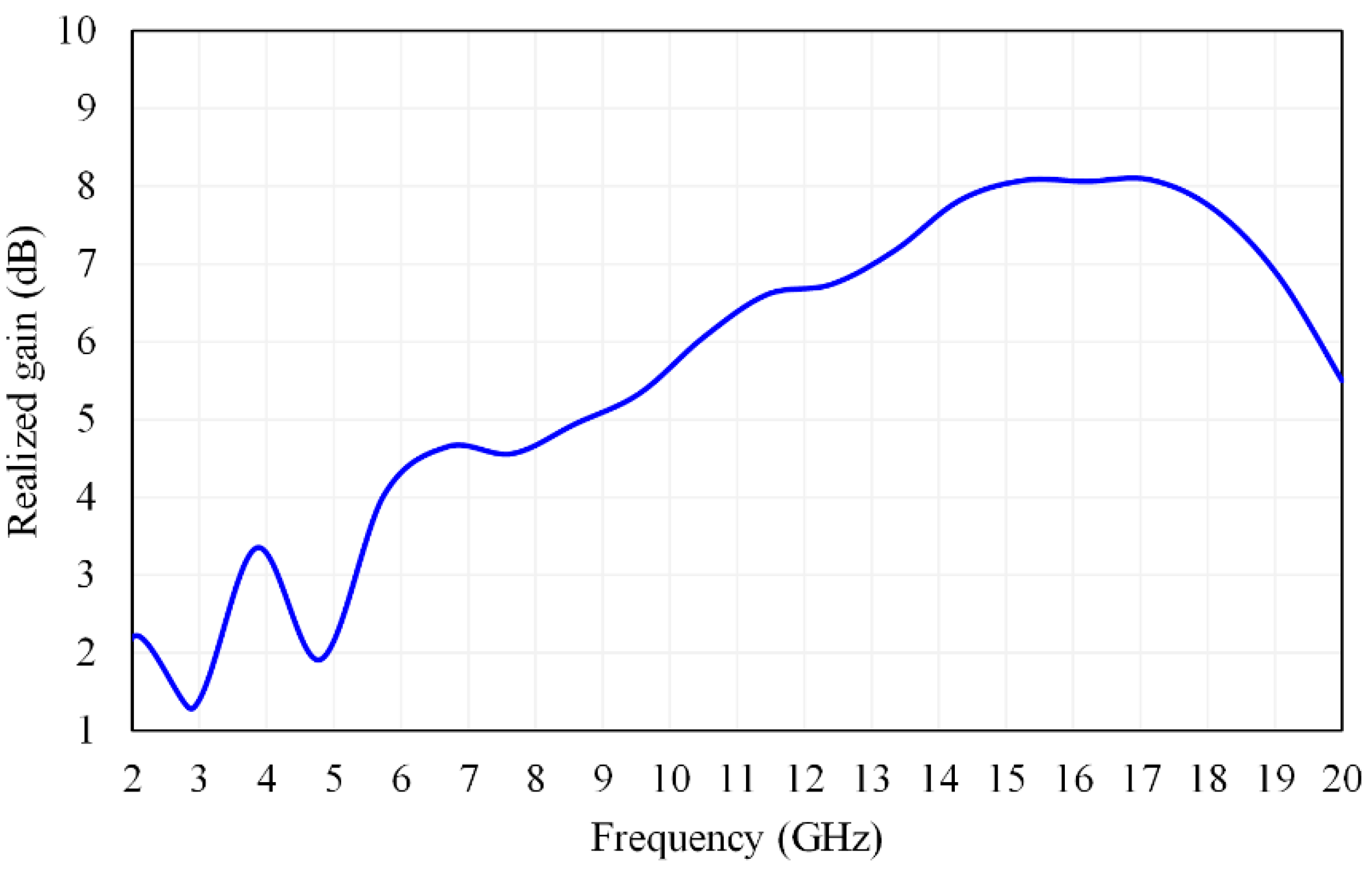
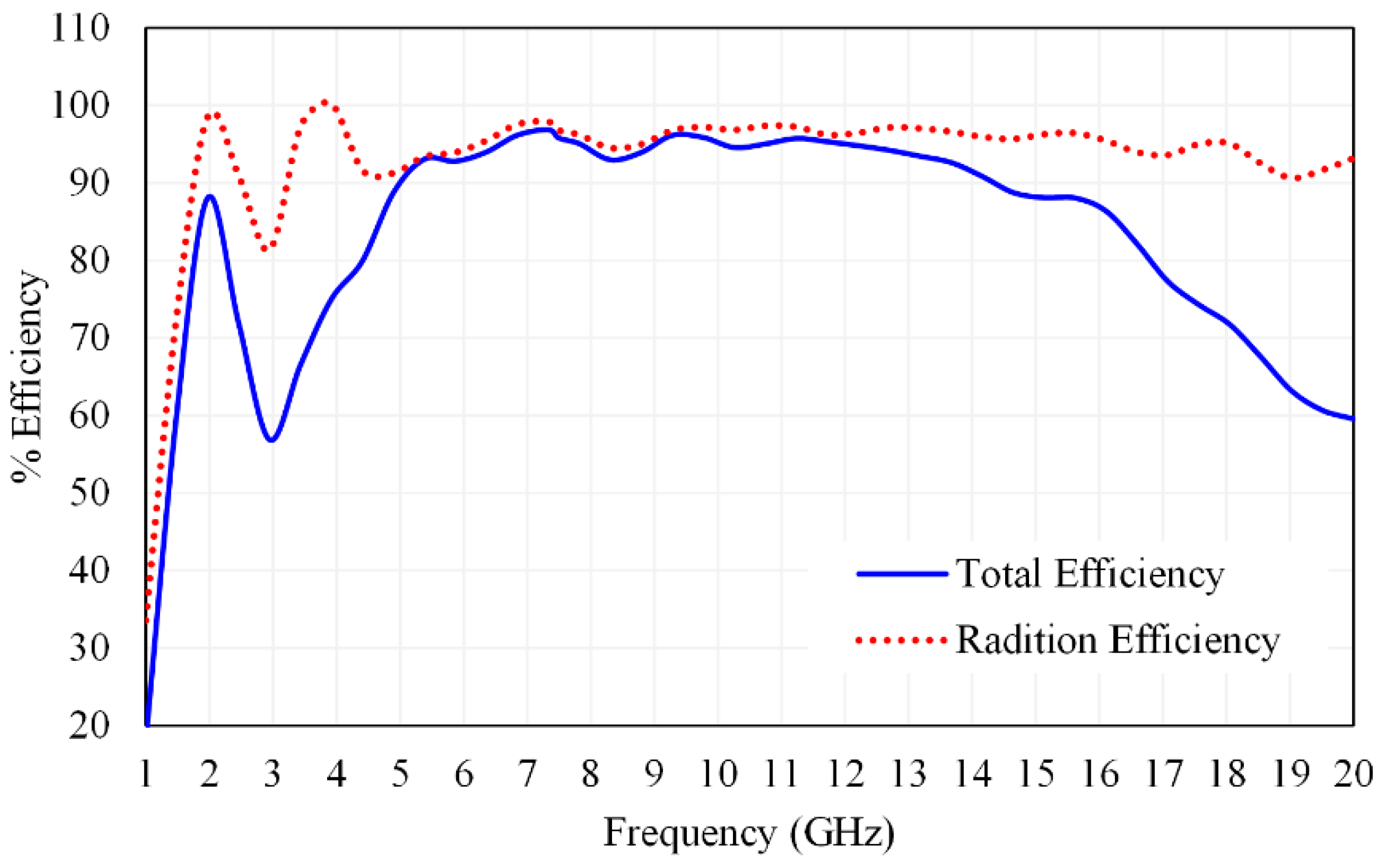
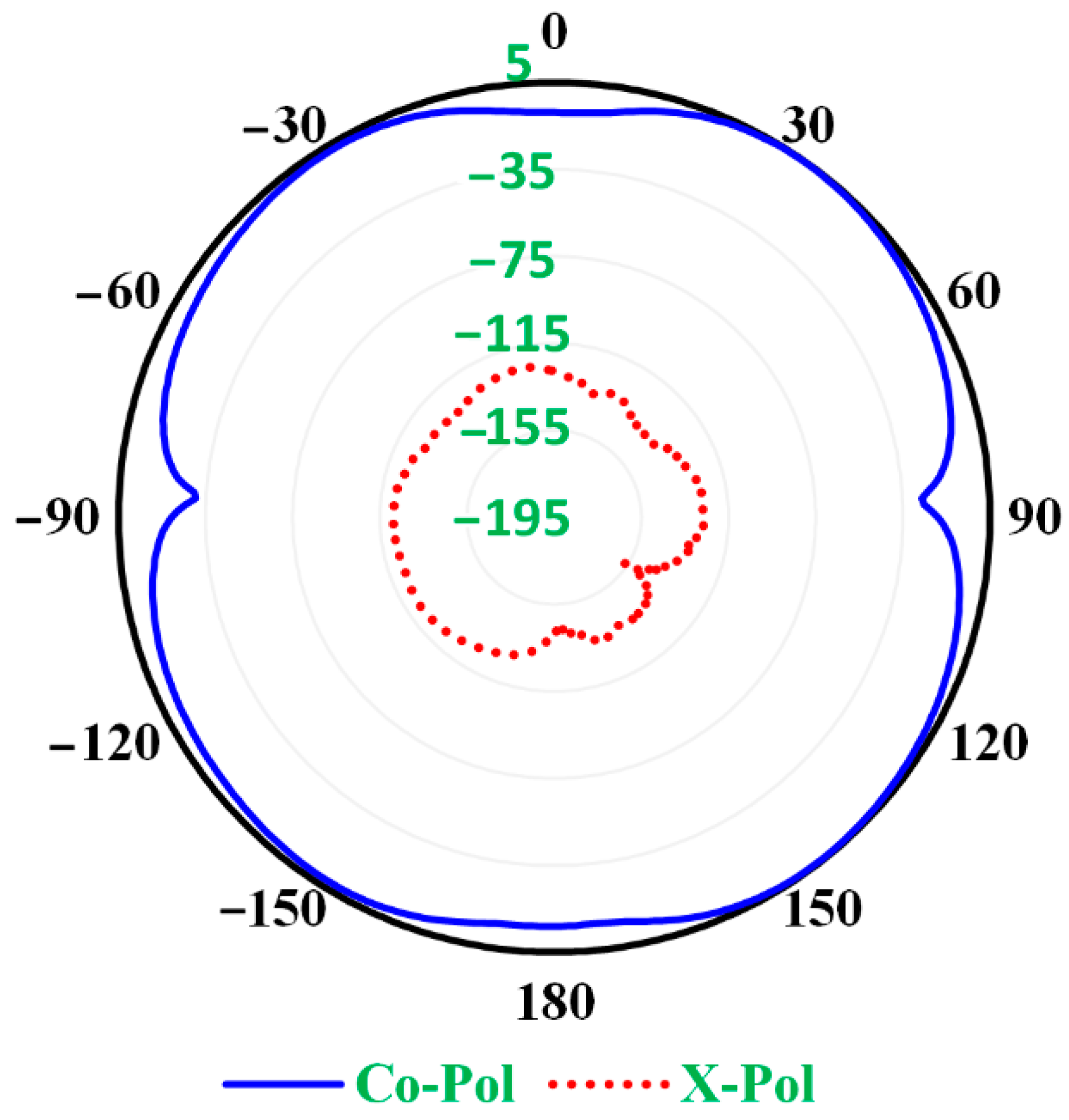
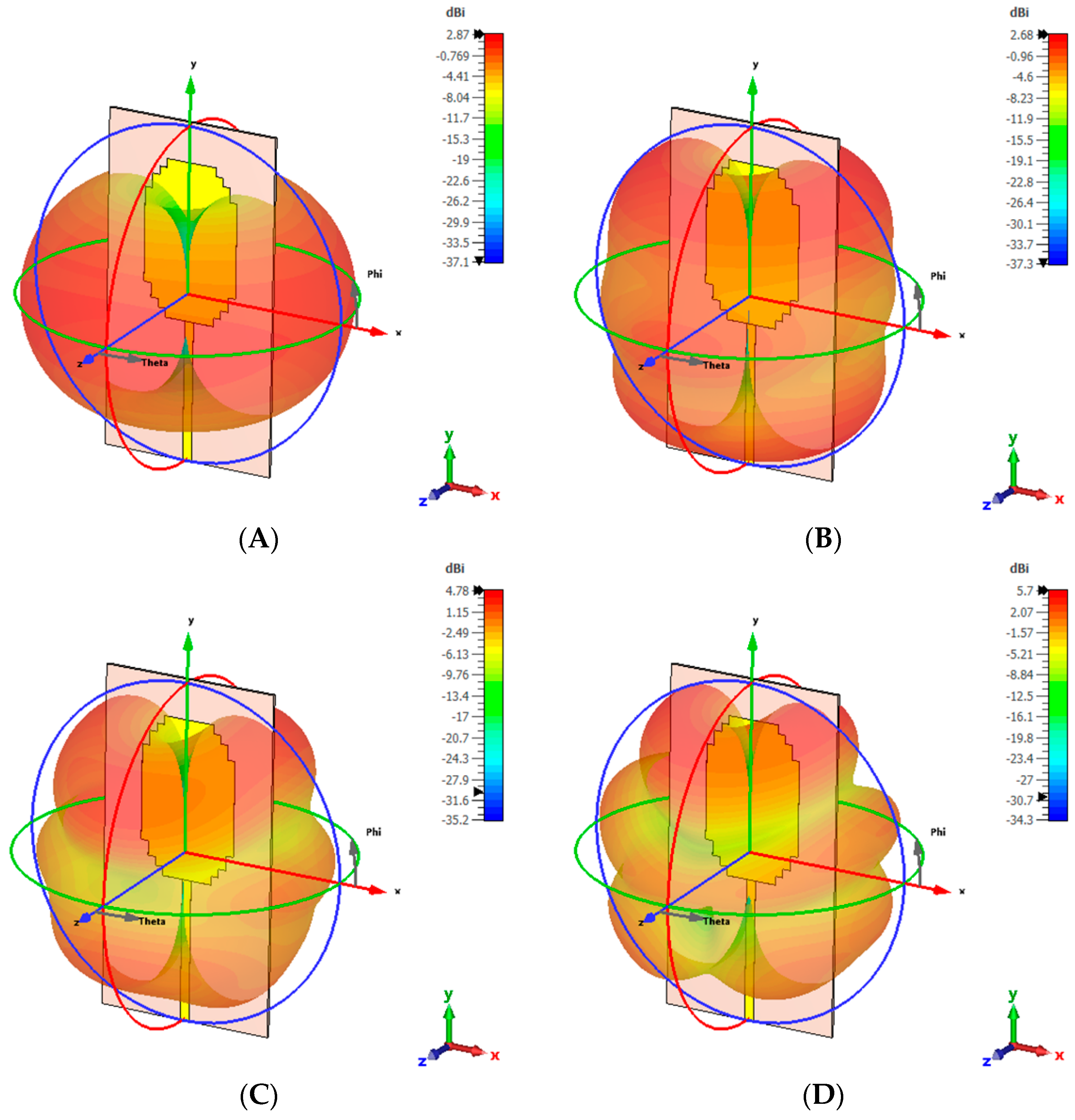
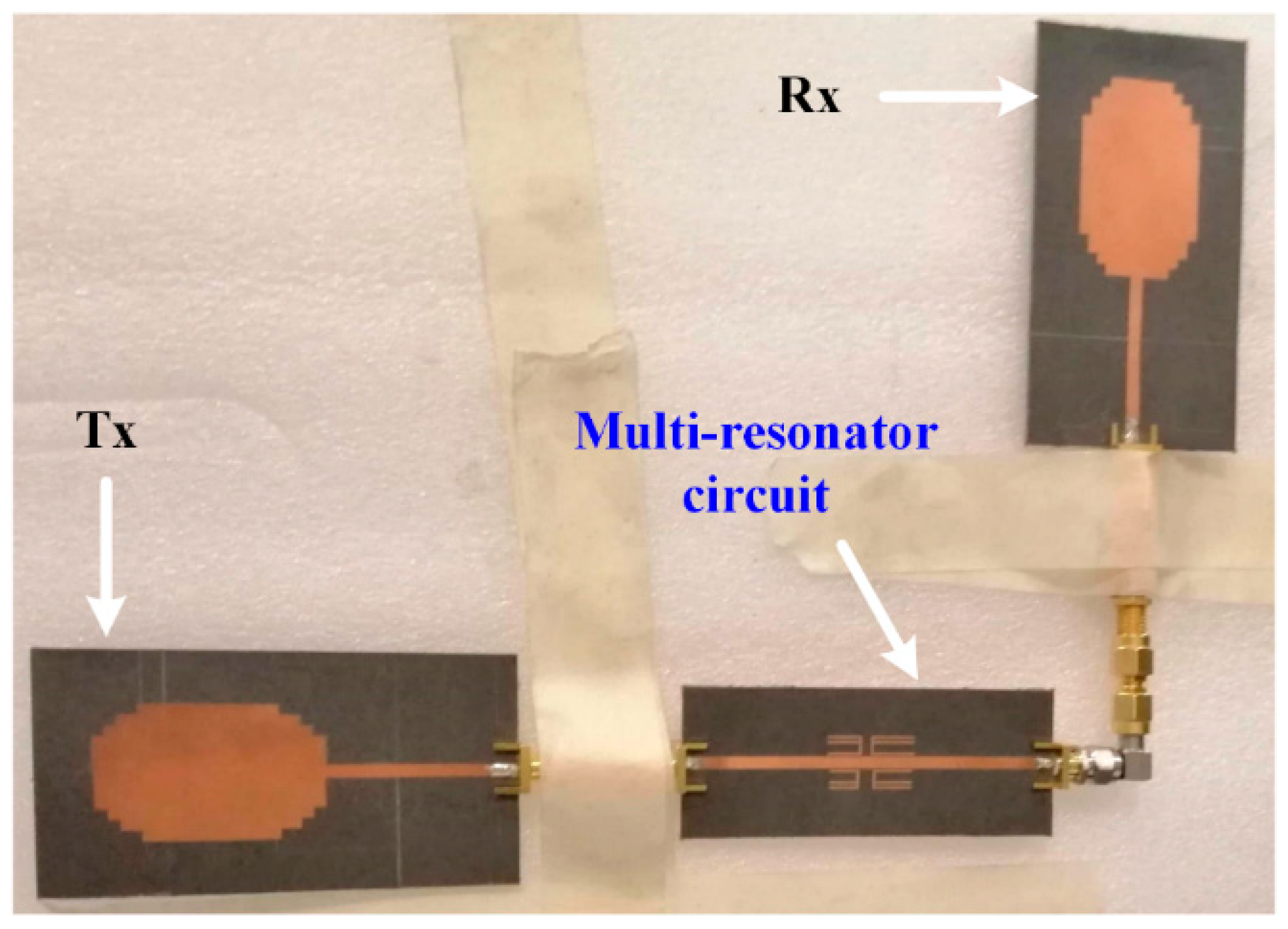

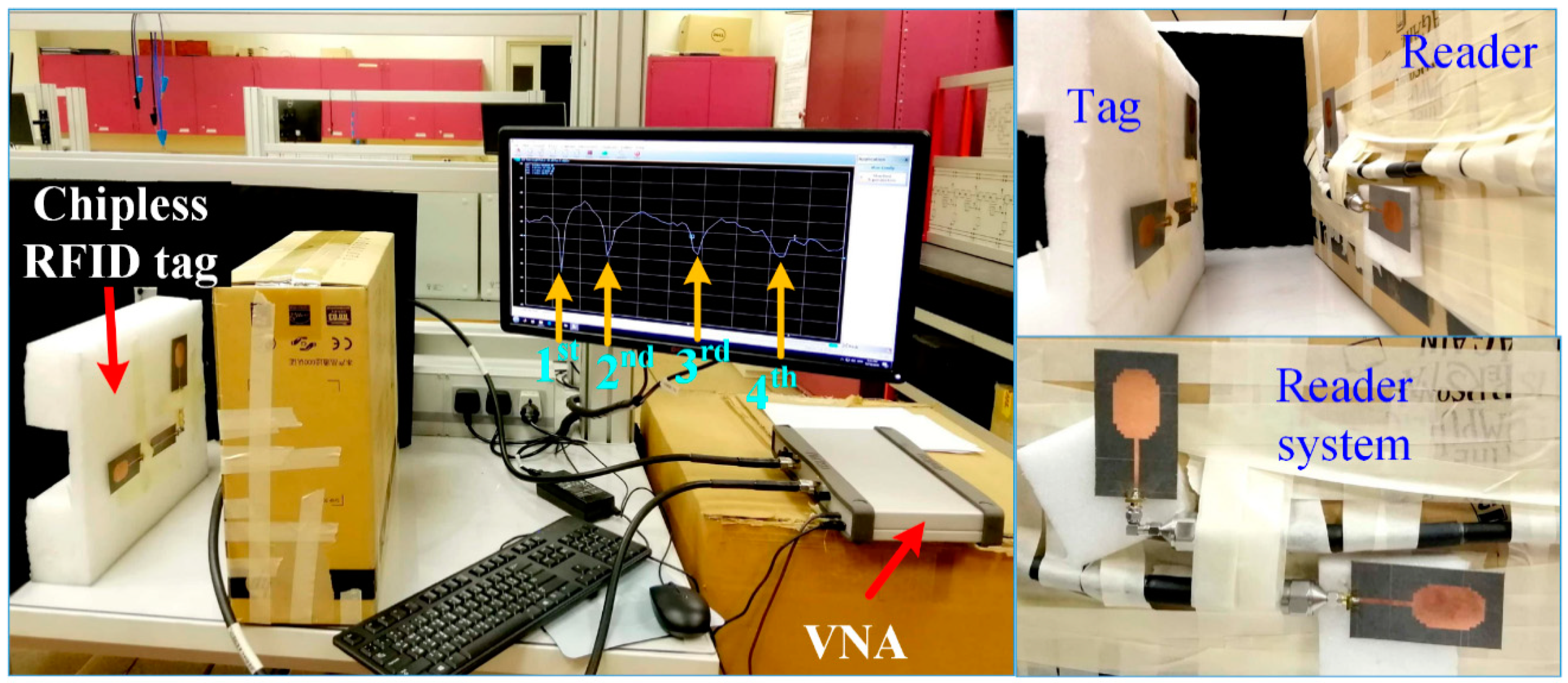
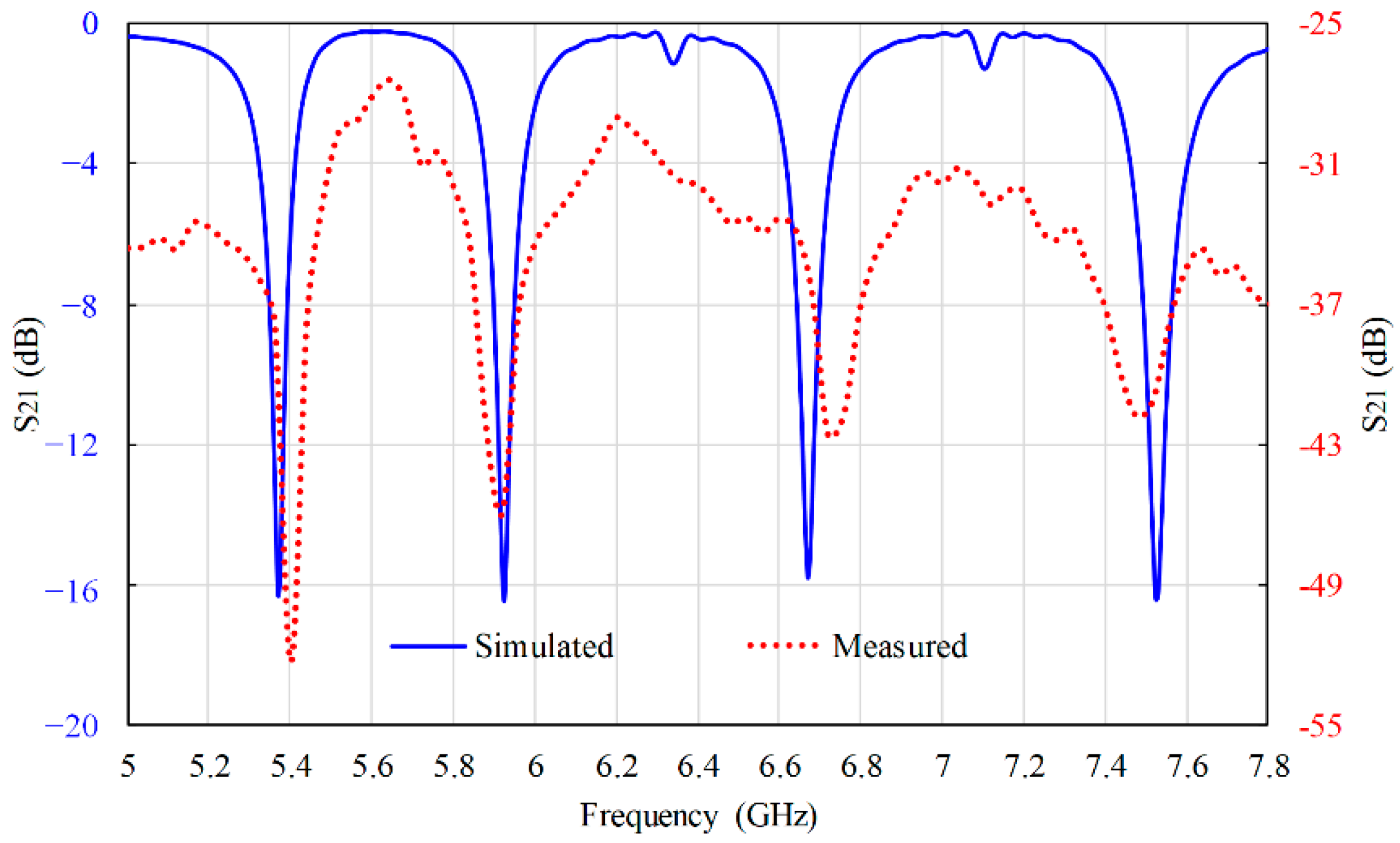
| Patch Design | Partial Ground Plane and Feed Line Design | Step-Cut Design | |||||
|---|---|---|---|---|---|---|---|
| Parameter | Value (mm) | Parameter | Value (mm) | Parameter | Value (mm) | Parameter | Value (mm) |
| Patch length (Lp) | 39.6 | Ground length (Lg) | 34.5 | l1 | 2.19 | w1 | 1.89 |
| Patch width (Wp) | 25 | Ground width (Wg) | 25 | l2 | 2.11 | w2 | 1.99 |
| Gap between the patch and ground plane | 0.52 | Feeder length (Lf) | 35 | l3 | 3.64 | w3 | 1.97 |
| Feeder width (Wf) | 2.4 | l4 | 23.72 | w4 | 13.30 | ||
| Reference | Frequency Bandwidth (GHz) | Antenna Type | Max. Gain (dB) | Range Achieved (cm) |
|---|---|---|---|---|
| [31] | 2 to 10 and 2 to 2.5 | Circular UWB monopole and LPDA | 1 and 5.5 | 5–40 |
| [30] | 4.28 to 9 | fingertip-shaped antenna (FSA) | - | 2 |
| [32] | 2 to 32 | Commercial | - | 10–20 |
| [33] | 4.24 to 5.33 | UWB monopole | 1.8–2.5 | 30 |
| [34] | 4.15 to 8 | UWB patch | 15.5 with two elements array | 35 |
| This work | 5 to 12 | USRP | 8 | 40 |
Publisher’s Note: MDPI stays neutral with regard to jurisdictional claims in published maps and institutional affiliations. |
© 2021 by the authors. Licensee MDPI, Basel, Switzerland. This article is an open access article distributed under the terms and conditions of the Creative Commons Attribution (CC BY) license (https://creativecommons.org/licenses/by/4.0/).
Share and Cite
Abdulkawi, W.M.; Nizam-Uddin, N.; Sheta, A.F.A.; Elshafiey, I.; Al-Shaalan, A.M. Towards an Efficient Chipless RFID System for Modern Applications in IoT Networks. Appl. Sci. 2021, 11, 8948. https://doi.org/10.3390/app11198948
Abdulkawi WM, Nizam-Uddin N, Sheta AFA, Elshafiey I, Al-Shaalan AM. Towards an Efficient Chipless RFID System for Modern Applications in IoT Networks. Applied Sciences. 2021; 11(19):8948. https://doi.org/10.3390/app11198948
Chicago/Turabian StyleAbdulkawi, Wazie M., N. Nizam-Uddin, Abdel Fattah A. Sheta, Ibrahim Elshafiey, and Abdullah M. Al-Shaalan. 2021. "Towards an Efficient Chipless RFID System for Modern Applications in IoT Networks" Applied Sciences 11, no. 19: 8948. https://doi.org/10.3390/app11198948







